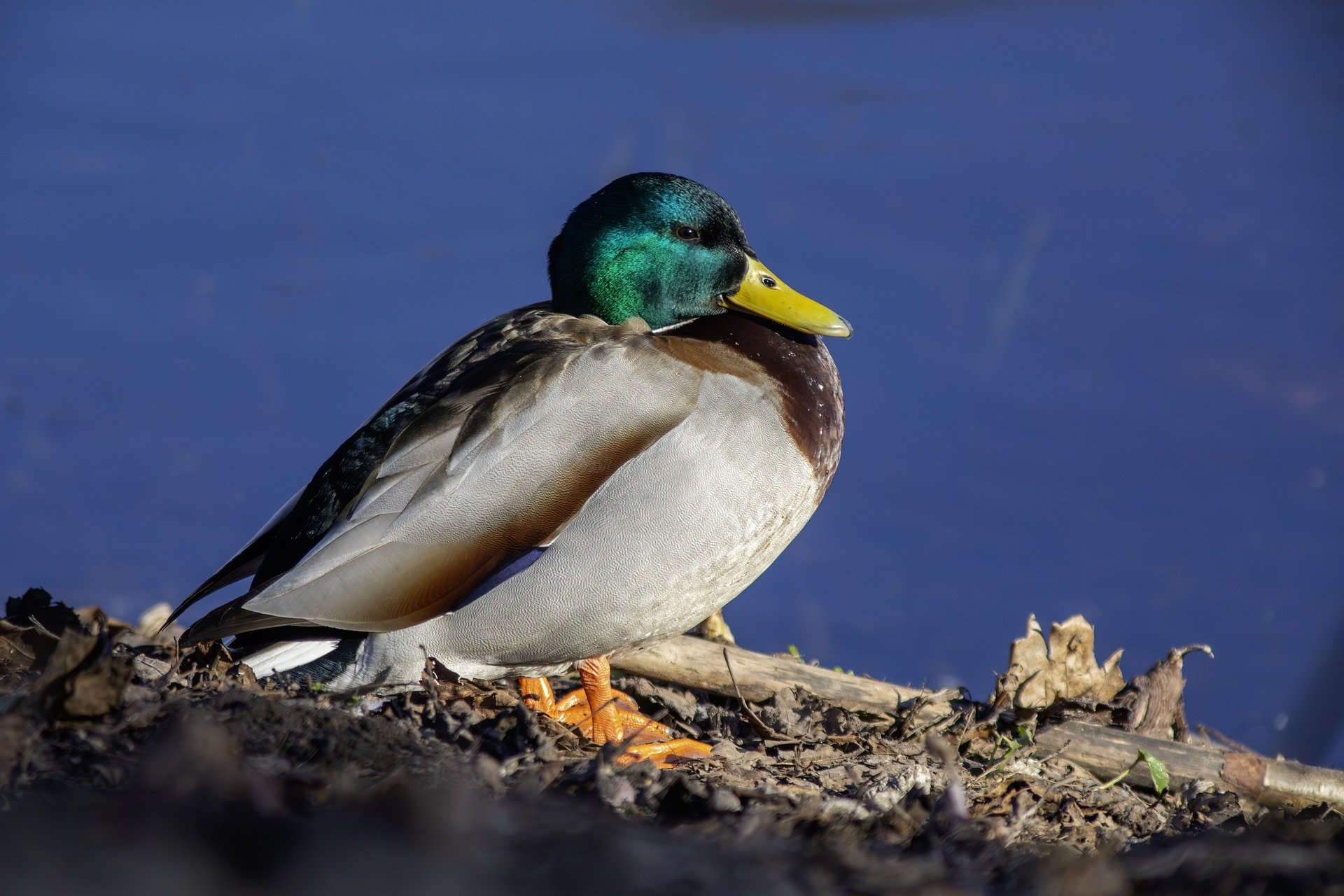The mallard (Anas platyrhynchos) is one of the most recognizable and widespread duck species in the world. Here’s some information about mallards:
Appearance: Mallards are medium-sized ducks with distinctive features. The male, known as a drake, has a glossy green head, a white ring around its neck, a chestnut-brown chest, and a gray body. The female, called a hen, has a mottled brown plumage that helps her blend into her surroundings, especially when nesting. Both sexes have a characteristic blue patch on their wings, called a speculum, which is bordered by white and black.
Habitat: Mallards are highly adaptable and can be found in a wide range of habitats, including freshwater lakes, rivers, ponds, marshes, and urban parks. They are often seen in both rural and urban areas, making them one of the most familiar duck species to people around the world.
Behavior: Mallards are dabbling ducks, which means they feed by tipping forward in the water to reach aquatic plants, seeds, insects, and small fish. They are also known to graze on land, especially during the breeding season when females need to build up reserves for egg-laying.
Migration: While some mallards are year-round residents in milder climates, many populations are migratory. Mallards breeding in northern regions migrate southward for the winter, often forming large flocks that can be seen flying in V-shaped formations.
Reproduction: Mallards typically breed in the spring and summer months. The female builds her nest on the ground, usually concealed among vegetation near water. She lays a clutch of about 8-12 eggs, which she incubates for around 28 days. After hatching, the ducklings are precocial, meaning they are born with their eyes open and are able to leave the nest and feed themselves shortly after hatching.
Conservation: Mallards are not considered globally threatened and are listed as a species of “Least Concern” by the International Union for Conservation of Nature (IUCN). However, like many waterfowl species, they face threats such as habitat loss, pollution, hunting, and predation. Conservation efforts aimed at protecting wetland habitats and regulating hunting have helped to maintain healthy mallard populations in many areas.
Mallards are not only important ecologically but also culturally significant, being a common sight in parks and bodies of water around the world, where they often attract the attention of birdwatchers and nature enthusiasts.
Views: 19
Subscribe to the newsletter:
